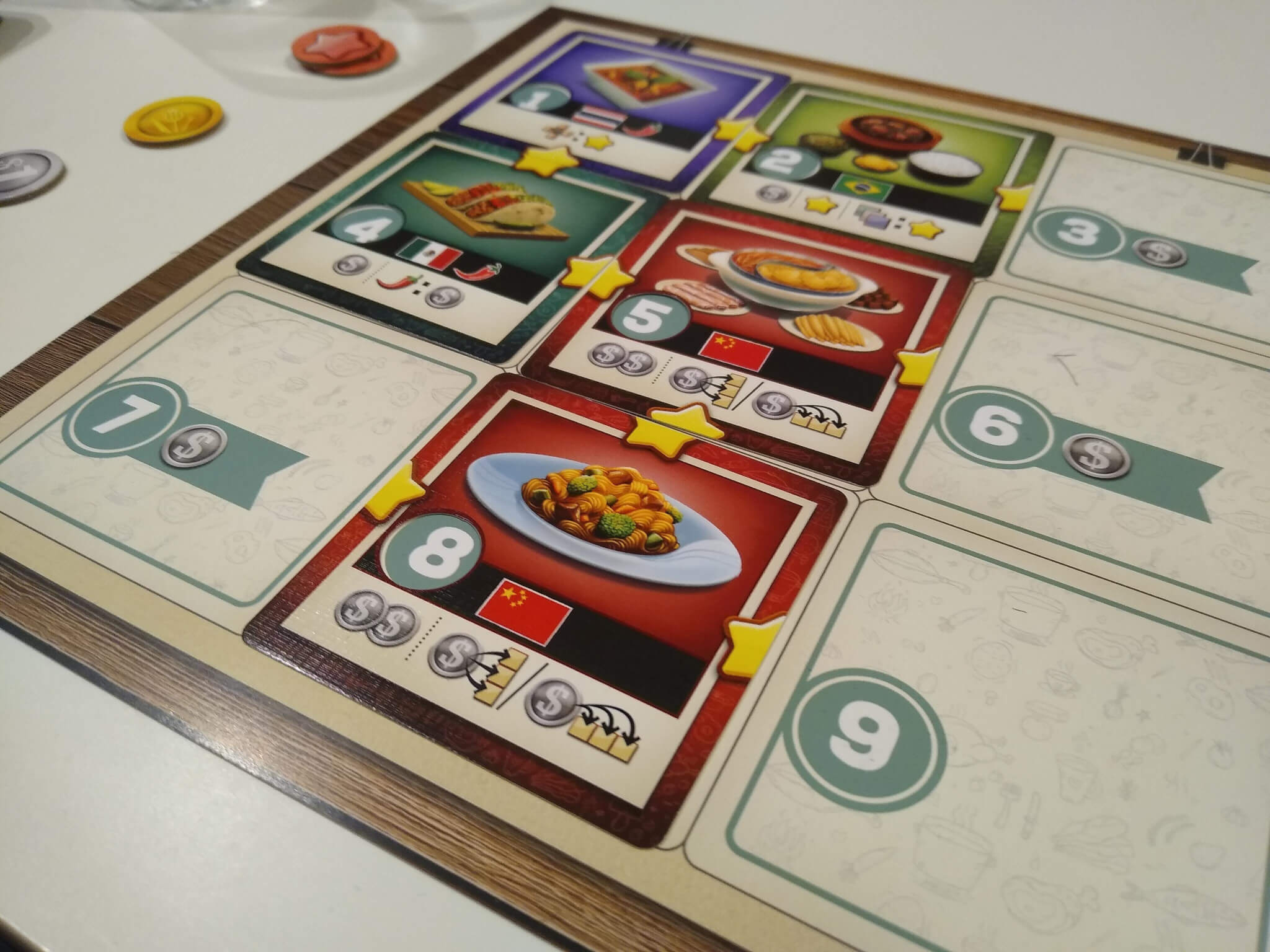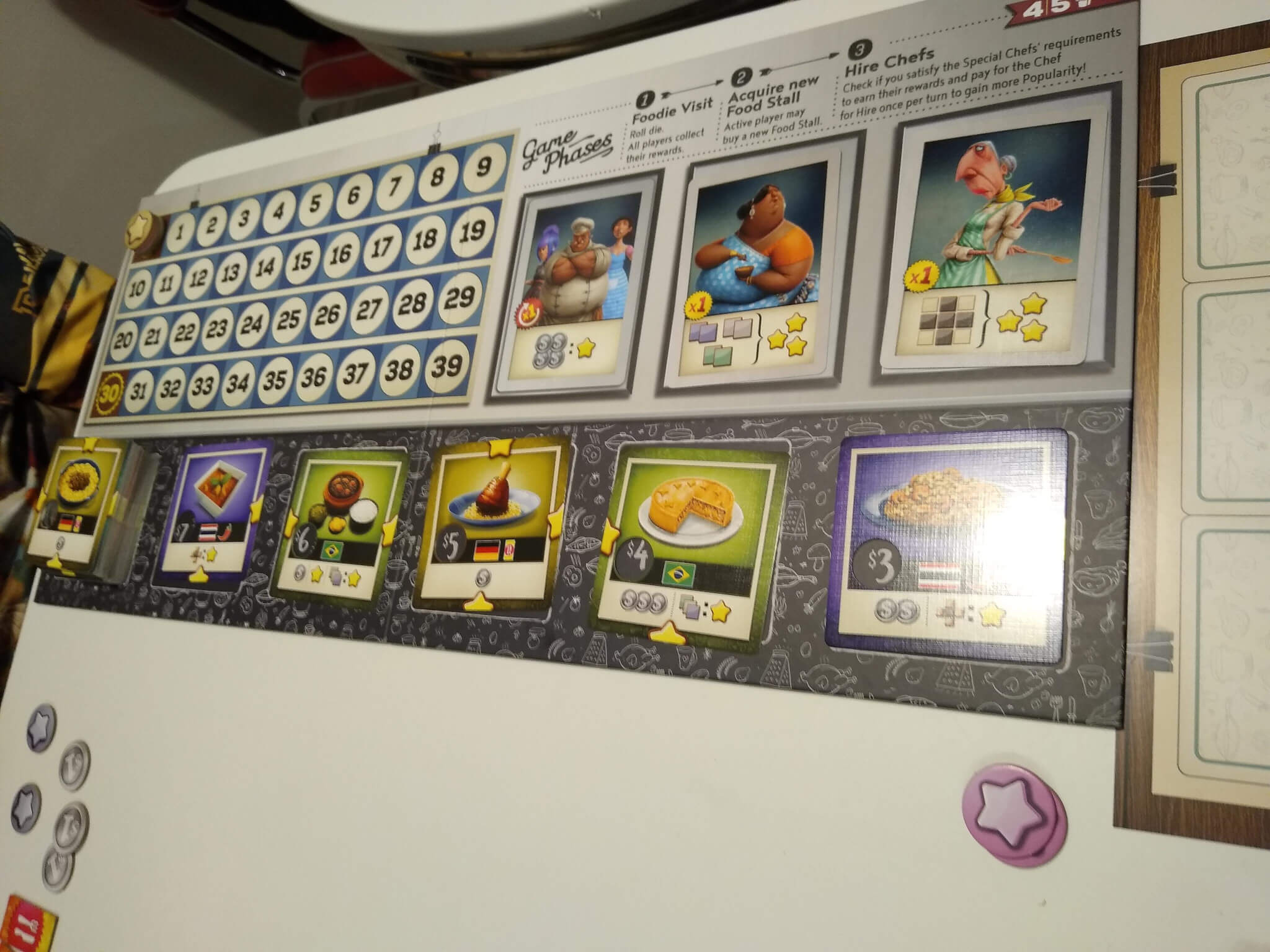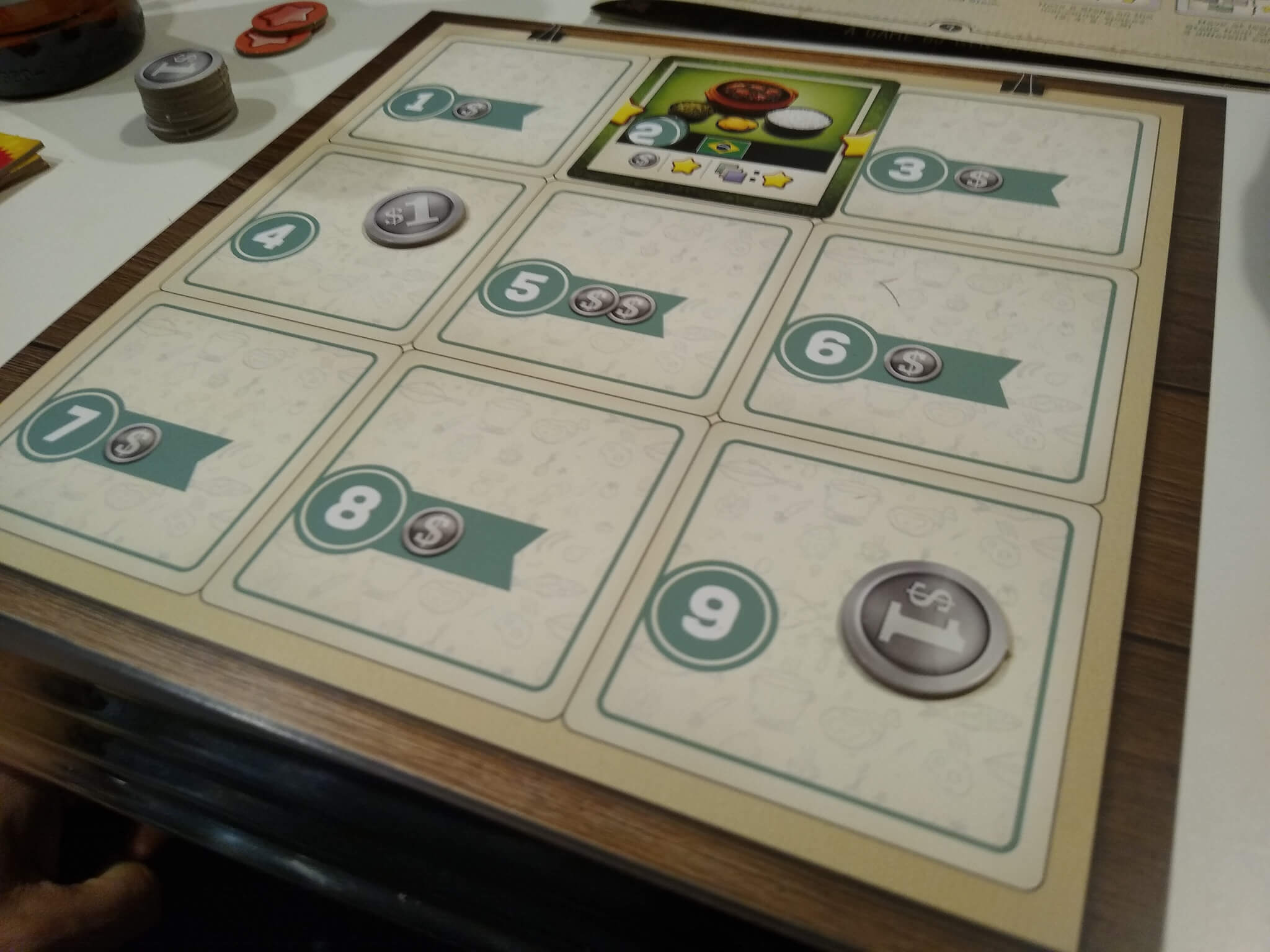When it comes to food courts, one of the best parts of being in one is the variety of food around you. In Foodies, you are looking to make your food court the most popular one around.
Foodies takes a simple concept and gives you so many pieces that it becomes quite a complex, yet fun game. Your food court is a three by three grid, which sits on the table in front of you. Each of these squares, almost like a bingo card, has a price on them. Ones that do not gain a single dollar token during set up — so each tile has a value at the beginning. In the middle of the table, you’ll find the main board, which contains a scoring area, three people that you can hire for your cash, and the new stalls you can purchase.
Purchased stalls can then be placed in your grid, replacing the coin value with the one listed. This is where making money will come in. After you have your grid card, everything laid out and a bit of starting coins and coupons, the real game begins. The first player rolls a dice, which shows which tile on the grid that customers are ordering from. When any player rolls, all players get the money listed on their own stall sheet, unless the player uses a flyer to lure the customer to an adjacent stall tile. So, the banker must go around dealing out money. If you have a single coin token on that tile, you get that coin token, which doesn’t get replaced.
Next, the player who has rolled will spend some of their money purchasing a stall item and/or hiring a worker. You can only purchase one worker and purchase one stall each turn. The stall card that you purchase must then be placed into your grid and cannot be moved. All of the stall cards then move across the main focus board, becoming cheaper the longer they have been left there, and a new one is added to the end.
This is a pretty simple turn structure and, once people get into it, there’s tons of strategy to be had. For a start, before you start your game, only a select few of the different regional cuisines are actually selected for the game, and the special employee cards are also selected from a deck, ensuring variety from game to game. This means that each time you play Foodies, you can end up playing differently, as there will be different food to collect.
When it comes to the grid, there are lots of strategy to what you are purchasing and placing. Some cards gain more money if you have other chilli peppers on your stand, others gain more money when there are foods of the same type or different types on the stand. Stars can also be found on the edges of the cards, which can be linked up with another star half. This will gain you an overall point each time the card is landed on. These stars are the main thing you want to collect in Foodies, as they are critical to improving your popularity, which is the measure which is scored. However, the modifiers which each cuisine adds really change up the ways you can earn money, popularity and more.
Foodies has so many different pieces, great artwork and is a really fun — yet quite complex — game. I enjoyed my time with it so much, but did run into one major issue; the number of money tiles. Foodies claims to be two to five players, however, at five players there just isn’t enough money tokens. Even with each player spending money on every turn, we were always out of cash and had to rely on tokens not included in the box to keep track. This was quite a pain, as the game otherwise felt really good to play.
You can purchase Foodies on the website of the publisher, CMON.



